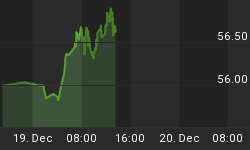The artificially engineered U.S. recovery is already starting to falter as a continuous procession of disappointing data continues to confirm the sad truth. Recent numbers on GDP, durable goods, housing, regional manufacturing, initial unemployment claims and leading economic indicators all indicate a sharp slowdown in GDP growth. Just today the ADP Employment report showed that the private sector added a paltry 38,000 jobs in May, down from 177,000 jobs in April, significantly below expectations, and the weakest number since September 2010. Just yesterday Case Shiller announced that the U.S. housing market had officially achieved a "double dip," in that national home prices have given up the entire 5% bounce that they had achieved after the May 2009 lows. These signs of continuing malaise comes at a time when the government is contemplating ways to dramatically cut spending. But given the economic weakness, is America really ready to accept the short term consequences that a government spending cut would cause?
Free market disciples (like me) believe that government intervention is anathema to a healthy economy. In contrast, we believe genuine government stimulus comes from low taxes, stable prices, reduced regulation and low debt. Our economic policy makers have scrupulously avoided such remedies. However, in the short term, it is possible for government central-planning to artificially boost GDP. But as the short term has come and gone, Washington's heavy hand is now inflicting lasting demand on the economy.
When a country spends in order to stimulate growth it gets the money from three sources: taxing its citizens; borrowing from the existing pool of capital, or borrowing newly created money from its central bank. All three options are economically poisonous.
The act of taxing one sector of the economy in order to redistribute wealth to another is not a net economic benefit. To think that taking money from Citizen A and giving it to Citizen B improves the outlook for both assumes that the government knows the best way to allocate resources. But everything I have ever seen tells me that this is not so.
A government could instead distribute money borrowed from the private sector's existing pool of capital into targeted areas of the economy. But this type of "stimulus" is simply a deferred tax with interest. Any money borrowed by government could have been utilized by the private sector to expand business and grow the economy. Instead, money spent by government makes no lasting economic impact.
Some liberal economists argue that funds left in the private sector would likely be saved, rather than spent, during an economic downturn-thus exasperating the recession. This may be true, but necessity, in the form of weak balance sheets, is the factor that usually drives the private sector to save. Any interference with that deleveraging process can have dire consequences in the long term. Government borrowing only delays the eventual pain because a significant tax increase will eventually be needed to pay down the added debt. If the private sector is prevented from paying down debt, the debts will simply be transferred, with interest, to the public ledger.
Finally, a government can acquire spending power from outside the existing domestic savings pool by borrowing newly printed money that enters the economy in the form of deficit spending. However, the inflation created by the central bank printing has its downside. At first, the economy experiences a combination of higher prices and growth. Producers raise prices as the domestic currency loses its value, while others are deceived into believing the value of money has remained unchanged; and so they increase their production and expand real GDP. However, the more the central bank prints, the less real growth and the more inflation the economy will experience.
This is precisely the recipe that we are currently following. Between 2008 and 2010, the Federal government borrowed over $3.1 trillion. It is expected to run-up another $1.5 trillion in debt this fiscal year. Meanwhile, the Federal Reserve has increased their balance sheet by nearly $2 trillion in order to accommodate the massive increase in public sector borrowing.
By borrowing printed money, the government has been able to perpetuate our consumption driven economy, while simultaneously raising most asset prices-even home prices have been prevented from falling to a level that can be supported by the free market. The Fed's desire to create inflation and support prices has at last driven up industrial commodity prices like copper to all-time nominal highs. But once oil prices crashed through the $100 per barrel level, the Fed was forced to ratchet down its inflationary rhetoric. The question now is whether actions will follow.
The Fed and the Administration have now reached the point of diminishing returns. Whatever anemic and temporary growth that was generated by borrowing and spending printed money is now being superseded by rising prices. Any further monetary stimulation will only send aggregate price levels surging, even as GDP growth falls.
The government's window to artificially drive real GDP growth by borrowing and spending has closed. The U.S. economy now faces another recession head-on, as the private sector deleveraging process resumes and the public sector deleveraging process begins. Alternatively, the Fed can keep expanding their balance sheet and sending the economy deeper into stagflation. The only question for investors is whether the next recession will be accompanied by inflation or deflation. But only Mr. Bernanke can answer that.
Subscribe to Euro Pacific's Weekly Digest: Receive all commentaries by Peter Schiff, Michael Pento, and John Browne delivered to your inbox every Monday.
Click here for free access to Euro Pacific's new special report: What's Ahead for Canadian Energy Trusts?
Be sure to pick up a copy of Peter Schiff's hit economic fable, How an Economy Grows and Why It Crashes.















